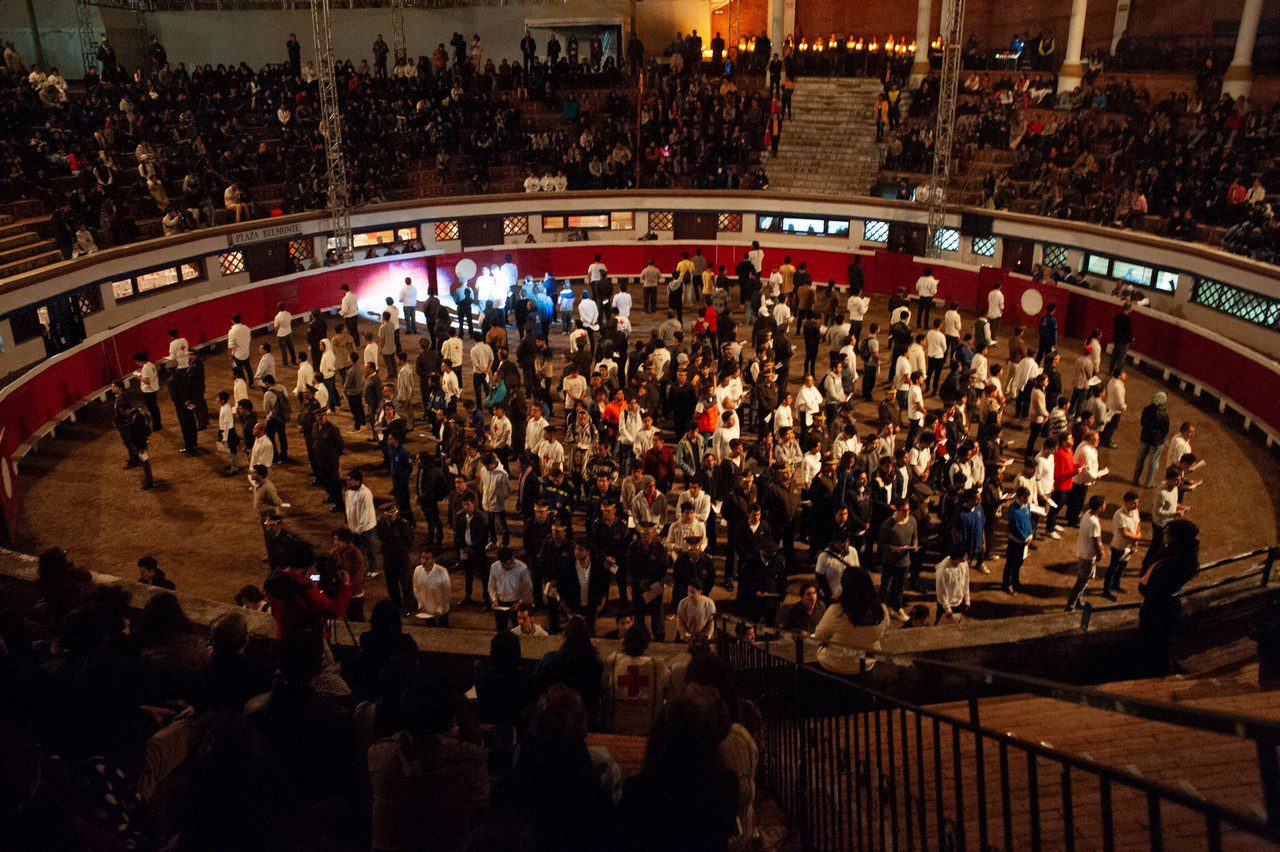PRESENTATION: Suzanne Lacy-By Your Own Hand
Suzanne Lacy is an American social practice artist, who coined the term new genre public art. Her work spans from visual art, film and performance art to installation, public practice and writing. All her work is linked by its engagement with social themes and urban issues, through conversation within communities of people. She has addressed issues such as rape, violence, feminism, aging and incarceration.
By Dimitris Lempesis
Photo: Museum Tinguely Archive
Suzanne Lacy presents the video installation “De tu puno y letra” (By Your Own Hand) (2014-15/2019) in a solo exhibition. It is one of the artist’s key works investigating gender-based violence. Lacy, a pioneer of feminist and activist performance art since the 1970s, brings together art and social commitment in her oeuvre. Her social practice works are often created in collaboration with local communities and focus on social problems such as domestic violence, age discrimination, and migration. By presenting the exhibition the Museum Tinguely acknowledges a highly relevant work by one of the most important feminist artists of our time while simultaneously creating a space for reflection, dialogue, and social responsibility. In the video installation “De tu puno y letra”(By Your Own Hand) (2014-15/2019), people who identify as men appear in succession and read excerpts from letters in a factual tone. The letters contain shocking reports of brutal gender-based and domestic violence that elicit deep sense of trepidation. The reports range from sexual assault to group rapes and femicide. The film material was shot in Quito, Ecuador, at an arena for bullfights, a male-connoted space that is traditionally characterized by violence and dominance. The circular arrangement of the projections transports the exhibition visitors to the arena, directly confronting them with the words and gazes of the participants. The life-size images make the physical and emotional challenge of the performance tangible. The conscious decision to have people who identify as men read the statements of victims who identify as women emphasizes the role of patriarchy as a structural basis for the violence. At the same time, the discrepancy between the male voices and the female experiences be come a central element that encourages viewers to consider and reflect on gender, power, and credibility. The projection ends with a key message that raises the perspective from an in dividual to a social· level: “It’s necessary not to be afraid, I told myself, necessary to write in order to heal, share the pain with others”. Lacy’s video installation is based on her participatory and dialogic performance from 2015. The artist was invited to develop a performance that allowed the letters collected within the scope of the Cartas de Mujeres campaign (2011-12) to receive public attention and acknowledgment. Organized by the city of Quito, the Centro de Arte Contemporaneo de Quito, UN Women and the Deutsche Gesellschaft fiir internationale Zusammenarbeit (GIZ) in Ecuador, it was a project dedicated to fighting violence against women. The performance, an event with five acts and around six hundred people who identify as men, took place in Quito on Novem ber 25, 2015, the International Day for the Elimination of Violence Against Women. It was pre ceded by workshops with men and boys on gender-based violence and the social construct of masculinity. Suzanne Lacy’s participative works show the transformative power of art and its potential to initiate social debates. As one of the leading voices of the feminist art movement of the 1970s, Lacy developed social practice, a new model that combined art and social action. In the early 1970s, at an extraordinarily early stage, Lacy addressed sexualized violence in her artwork. In 1972 she organized “Ablutions” (with Judy Chicago, Sandra Orgel, and Aviva Rahmani), a performance that is one of the first artworks to address rape from the perspective of people who identify as women. Of special note is Three Weeks in May, a three-week performance that revolves around reported rapes in Los Angeles (with Leslie Labowitz and Ariadne: A Social Art Network). With these early works, Lacy and her colleagues were pioneers, both artistically and socially, in making gender-based violence a matter of public discussion from a decidedly female perspective. In her works the victims were given a voice and the patriarchal social causes of this violence were named. The exhibition at the Museum Tinguely highlights the global relevance and topicality of the subject. A particular accent is provided by juxtaposing the video installation with “Mengele- Dance of Death” (1986) by Jean Tinguely. In this dark, kinetic installation consisting of burned machine parts and animal bones, Tinguely characterized violence and death from a historical and personal perspective. While the late medieval tradition conveys the transitoriness of all people and the equality of all—from king to beggar—in death, it is clear today that people are impacted quite differently by this according to their status in society—but also depending on their affluence and race. Domestic and sexualized violence is widespread and occurs every day. Niki de Saint Phalle, the second wife of Tinguely and the benefactor who donated the museum’s collection, was also a victim. In 1994 she revealed in her book “Mon secret” that she had been abused by her father at the age of eleven. In her works, she implicates patriarchal structures and reveals the role of violence and abuse of power. Latin American feminists are now pioneers in the fight against gender-based violence and femicide. In contrast, the topic has only begun to receive attention in European and Swiss politics and society in the past few years. The accompanying program focuses on the local situation in Switzerland and invites visitors to participate in the dialogue through lectures, conversations, and a participatory writing project. To this end, the Museum is cooperating with the victim support organization Opferhilfe beider Basel, the Literaturhaus Basel and the Q.U.I.C.H.E. Collective. Within the scope of the exhibition, the Museum will also present the performance “The hand, the rock, your shoulder, and my mouth (2022) by Tyra Wigg. In contrast to touch that is expressed as violence, touch as care and therapeutic practice are the focus of the performance. A literal counterweight is created through the handling of a large rock and the careful and healing treatment of the body and trauma.
Photo: Suzanne Lacy, De tu puño y letra. Diálogos en el ruedo, 2015, Performance, Plaza Belmonte bullring, Quito, Ecuador, © Suzanne Lae, Courtesy the artist Photo: Christoph Hirtz
Info: Curator: Dr. Sandra Beate Reimann, Museum Tinguely, Paul Sacher-Anlage 11, Basel, Switzerland, Duration: 9/4-7/9/2025, Days & Hours: Tue-Wed & Fri-Sun 11:00-18:00, Thu 11:00-21:00, www.tinguely.ch/
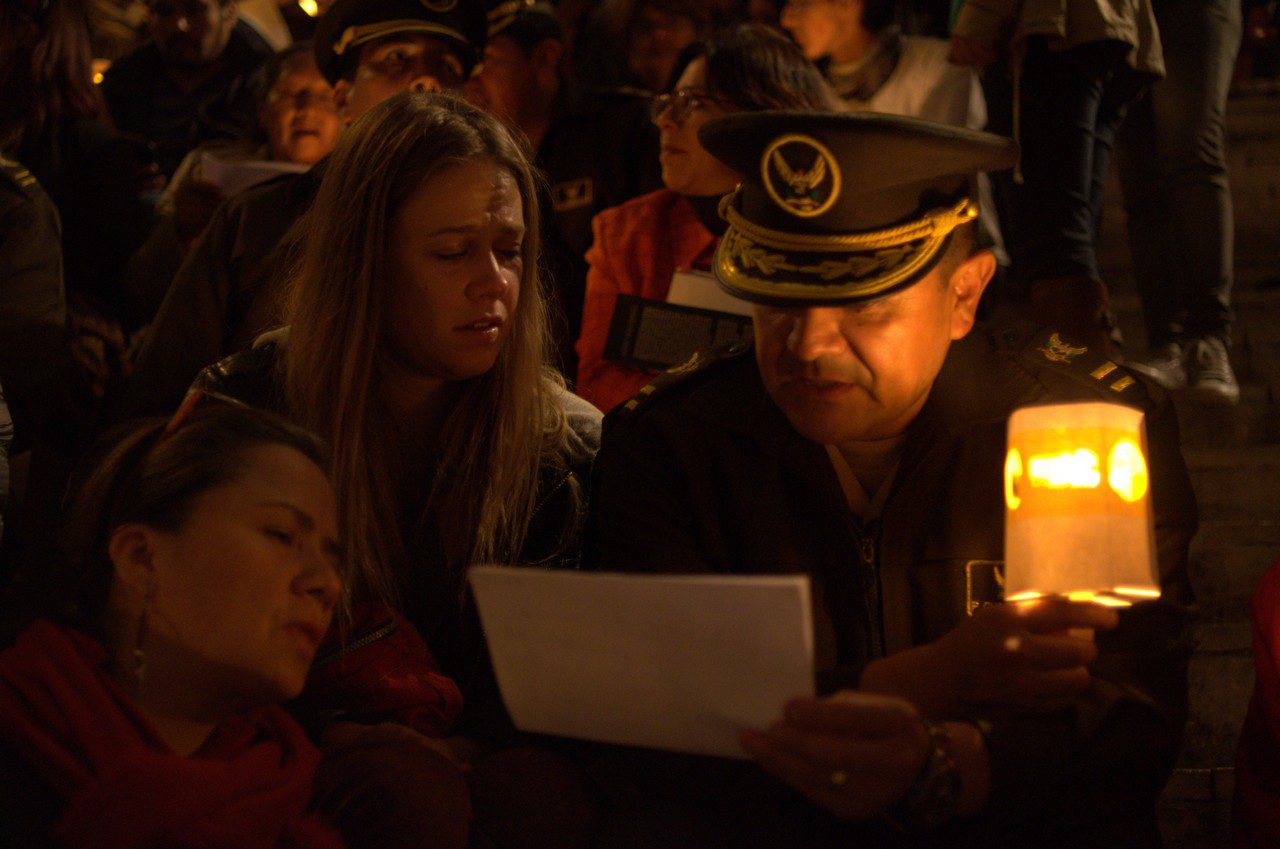

Suzanne Lacy, De tu puño y letra (By Your Own Hand), 2014-15/2019, Project (2014–15) and performance, Plaza Belmonte bullring, Quito, Ecuador (2015), Multi-channel video installation (2019). Scriptwriter: Gabriela Ponce; sound design: Bruno Louchouarn; workshop: Timm Kroeger (Cooperacion Alemana GIZ); director, AV: Javier Andrade; video editor: Peter Kirby Material: Six-channel HD video installation, with sound, 30 min., © Suzanne Lae, Courtesy the artist, Photo: 2025 Museum Tinguely, Basel; Pati Grabowicz
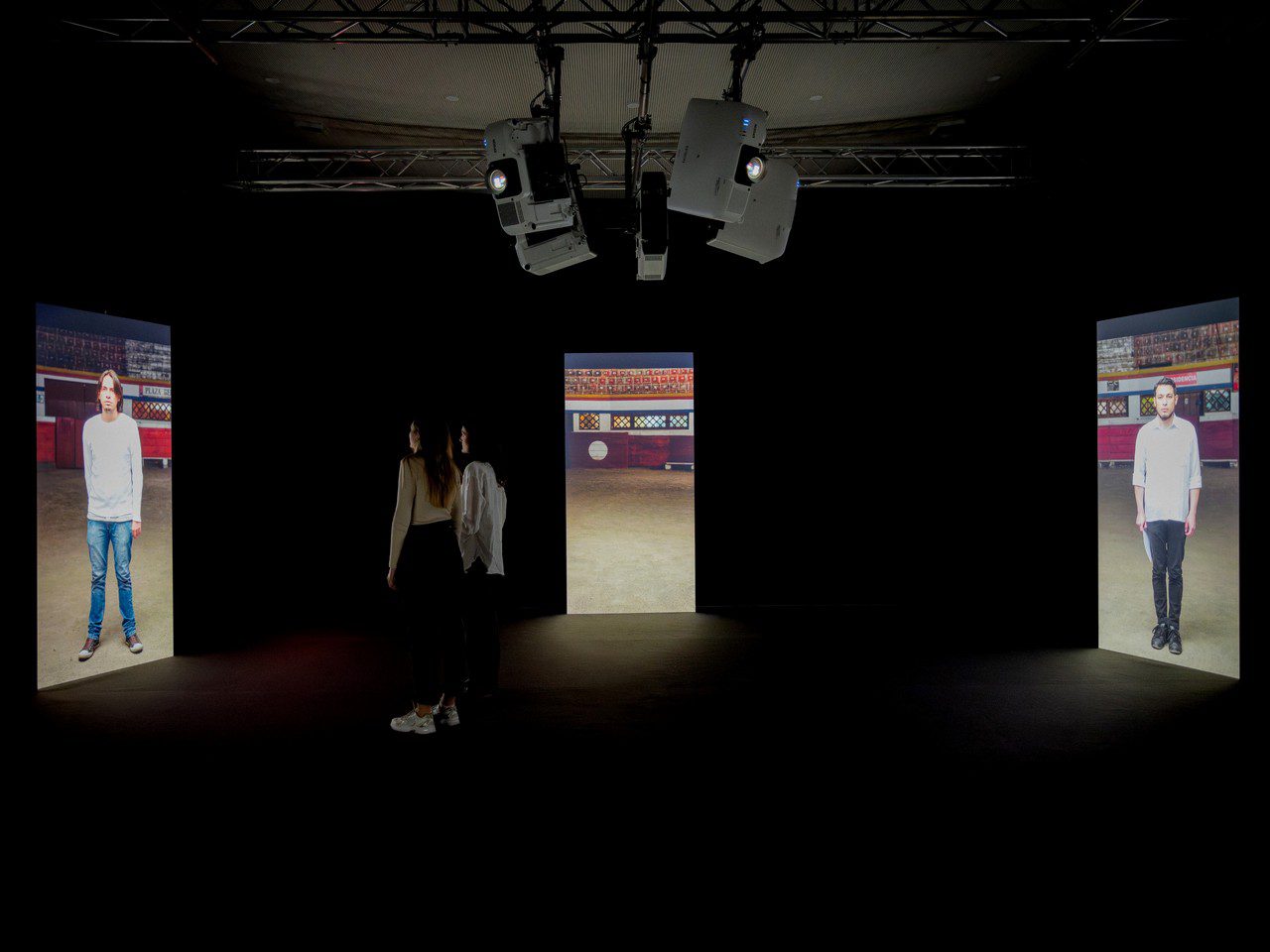
Suzanne Lacy, De tu puño y letra (By Your Own Hand), 2014-15/2019, Project (2014–15) and performance, Plaza Belmonte bullring, Quito, Ecuador (2015), Multi-channel video installation (2019). Scriptwriter: Gabriela Ponce; sound design: Bruno Louchouarn; workshop: Timm Kroeger (Cooperacion Alemana GIZ); director, AV: Javier Andrade; video editor: Peter Kirby Material: Six-channel HD video installation, with sound, 30 min., © Suzanne Lae, Courtesy the artist, Photo: 2025 Museum Tinguely, Basel; Pati Grabowicz
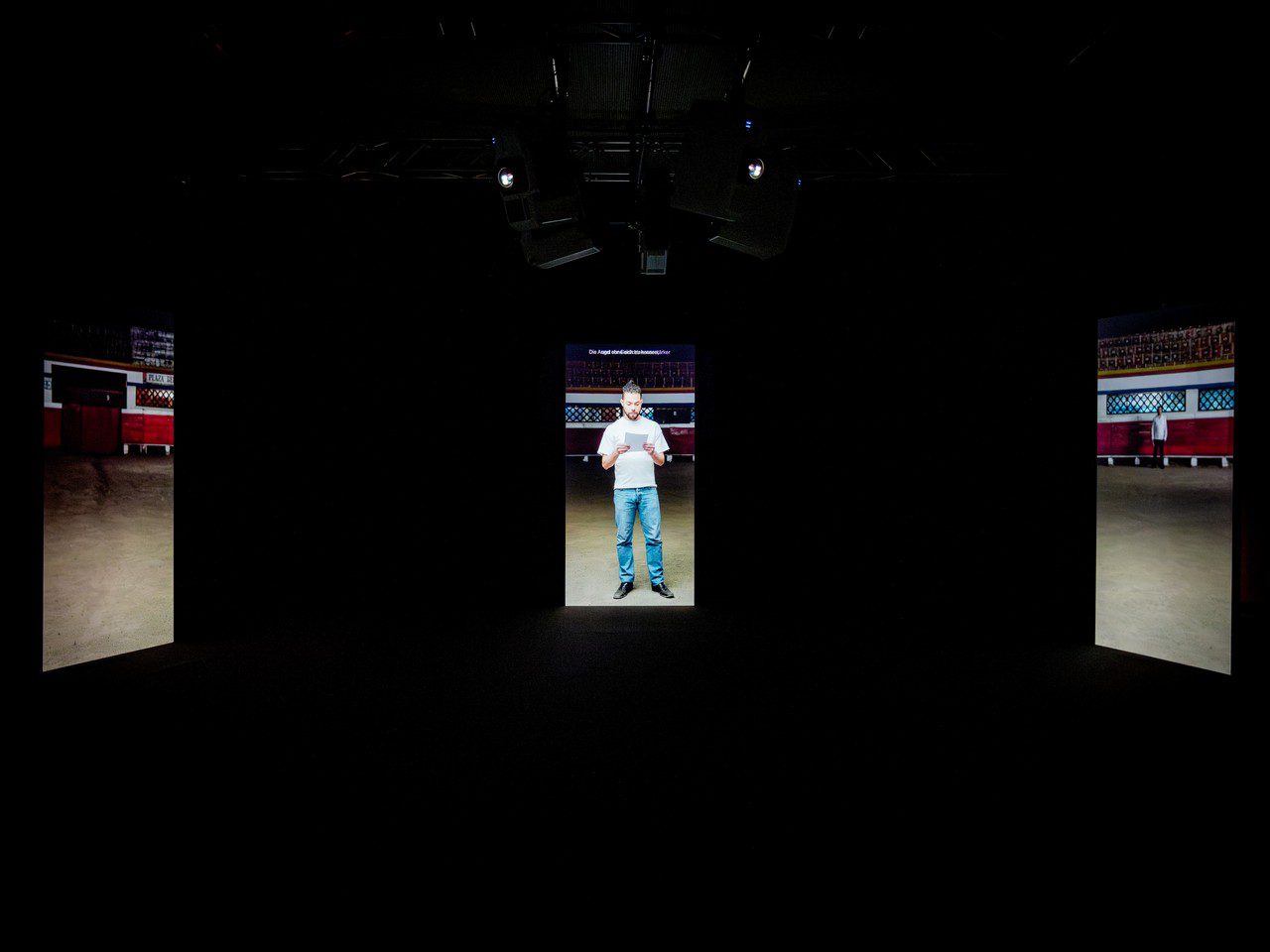
Suzanne Lacy, De tu puño y letra (By Your Own Hand), 2014-15/2019, Project (2014–15) and performance, Plaza Belmonte bullring, Quito, Ecuador (2015), Multi-channel video installation (2019). Scriptwriter: Gabriela Ponce; sound design: Bruno Louchouarn; workshop: Timm Kroeger (Cooperacion Alemana GIZ); director, AV: Javier Andrade; video editor: Peter Kirby Material: Six-channel HD video installation, with sound, 30 min., © Suzanne Lae, Courtesy the artist, Photo: 2025 Museum Tinguely, Basel; Pati Grabowicz
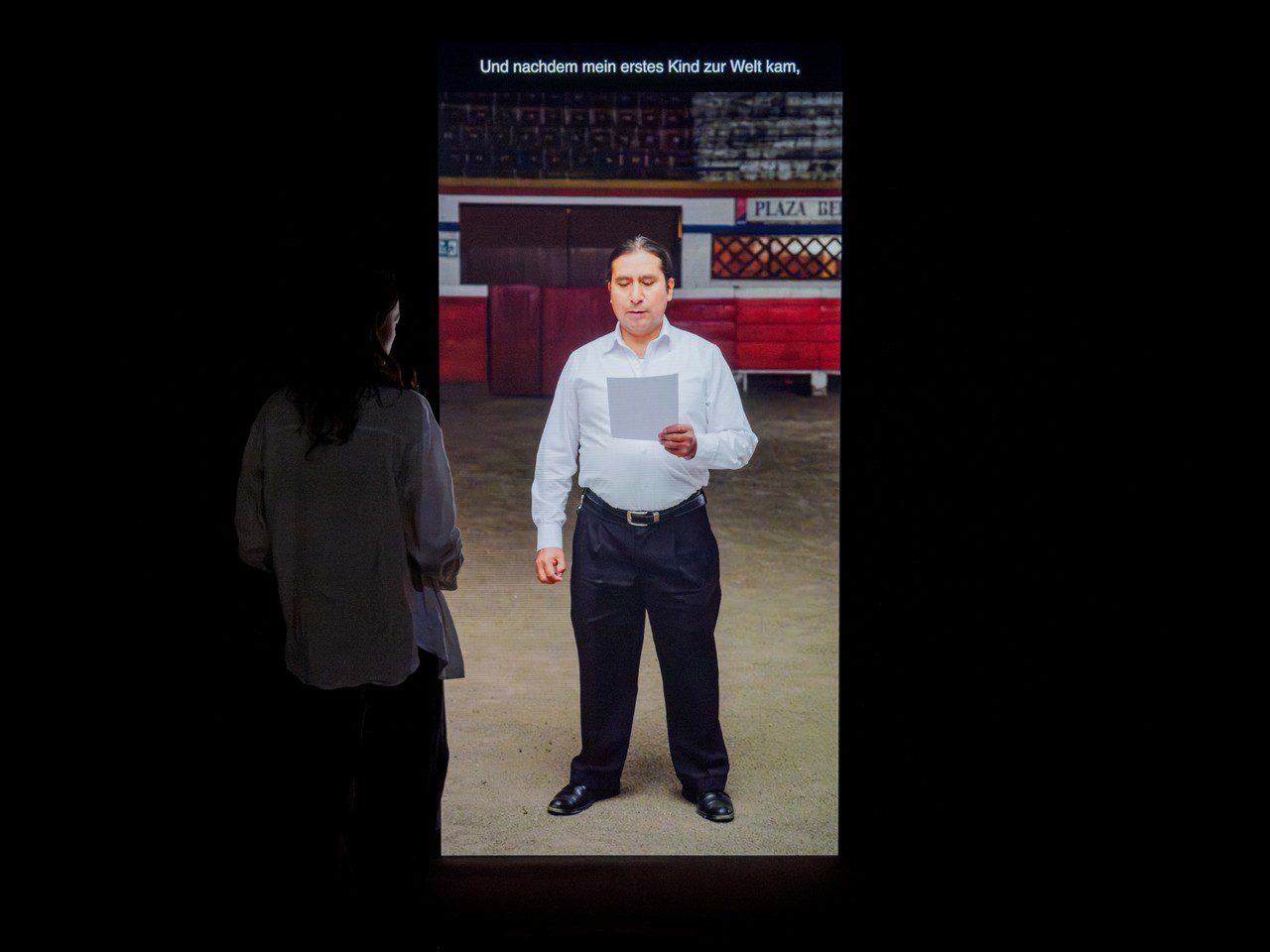
Suzanne Lacy, De tu puño y letra (By Your Own Hand), 2014-15/2019, Project (2014–15) and performance, Plaza Belmonte bullring, Quito, Ecuador (2015), Multi-channel video installation (2019). Scriptwriter: Gabriela Ponce; sound design: Bruno Louchouarn; workshop: Timm Kroeger (Cooperacion Alemana GIZ); director, AV: Javier Andrade; video editor: Peter Kirby Material: Six-channel HD video installation, with sound, 30 min., © Suzanne Lae, Courtesy the artist, Photo: 2025 Museum Tinguely, Basel; Pati Grabowicz

Suzanne Lacy, De tu puño y letra (By Your Own Hand), 2014-15/2019, Project (2014–15) and performance, Plaza Belmonte bullring, Quito, Ecuador (2015), Multi-channel video installation (2019). Scriptwriter: Gabriela Ponce; sound design: Bruno Louchouarn; workshop: Timm Kroeger (Cooperacion Alemana GIZ); director, AV: Javier Andrade; video editor: Peter Kirby Material: Six-channel HD video installation, with sound, 30 min., © Suzanne Lae, Courtesy the artist, Photo: 2025 Museum Tinguely, Basel; Pati Grabowicz

Documentation of video shoot (2017). Scriptwriter: Gabriela Ponce; sound design: Bruno Louchouarn; workshop: Timm Kroeger (Cooperacion Alemana GIZ); director, AV: Javier Andrade; video editor: Peter Kirby, © Suzanne Lae, Courtesy the artist, Photo: Andres Molestina

